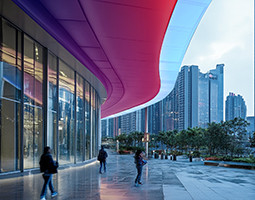What is customer experience?
Customer experience, or CX, encompasses every interaction a brand has with its customers, leading to an overall impression the organization creates with its customers for the lifetime of their relationship with the brand—and especially during their purchase journey. Customer experience is, by necessity, closely tied to employee experience (EX), as employees must be equipped to support the customer experience at every touchpoint.
Since CX must align with changing customer expectations, it can be difficult to achieve and maintain. The definition of a positive experience evolves endlessly, as consumers’ (and employees’) expectations are affected by their most recent great experience.
What are the business benefits of a positive customer experience?
A company that creates a positive customer experience realizes multiple business benefits, including:
- Loyalty. Customers who have a positive experience with a company, especially during the purchase process, keep coming back—and can even become ambassadors for the brand.
- Revenue. By closely monitoring the ever-changing needs that add up to CX, businesses can adjust as needed and respond to the market—resulting in increased revenue.
- Engagement. Individuals who know and trust a company from a positive CX are more likely to be receptive to that company’s outreach and marketing initiatives—contributing to customers’ lifetime value.
What does the 2021 customer experience look like?
The pandemic-fueled acceleration of digital has transformed traditional business models and empowered customers to engage—wherever they are, in a personalized, relevant way.
Today, they can browse product and service options on the go (mobile search), engage with a live agent (chat/video), resolve issues through self-service (i.e., chatbots), collaborate with peers to review options (social), negotiate and make purchases (e-commerce/m-commerce), and have items delivered directly to their doorstep.
How are some of today’s companies transforming to create positive customer experiences?
By completely re-imagining how they interact with customers, using the possibilities spawned by next-generation digital technologies and associated business practices, companies such as Apple, Google and Netflix have ignited a revolution in serving and monetizing their customers.
Data is key to getting CX right. Harnessing it, harvesting the right insights from it and activating against it in an agile manner are critical. The companies above, along with Amazon, Facebook and others, have leveraged the data that individuals generate through online buying, browsing, “liking,” swiping, commenting, etc., to understand and even anticipate their customers’ wants and needs—and gotten to the “why” behind their actions—with greater accuracy than has ever been possible before. Using this information, these brands have been able to seemingly read the minds of their customers—“if you enjoyed product X, you’ll probably love product Z”—and make their customers’ purchasing process easy, enjoyable, fun and seductive.
Now, inspired by these pioneers, companies like Burberry, mBank and Royal Caribbean are rethinking the way they market, sell and offer products and services, too. Among other things, Burberry embeds chips into its clothing that activate short films on smartphones and tablets, mBank delivers digital services to customers based on real-time banking activity and Royal Caribbean partners with FourSquare to enable guests to keep up with events on the ship. Using SMAC Stack technologies and by harvesting data from “smart” objects, a.k.a., IoT devices, these and a growing number of enterprises are developing new models of how to build demand-side customer value and generate supply-side financial return.
What’s next in digital customer experiences?
While enterprises have enthusiastically adopted Digital 1.0 (online, mobile and social) and asset-light (cloud-enabled) services, the next frontier is where contextual, intuitive and experiential engagement occurs across various customer touchpoints.

















